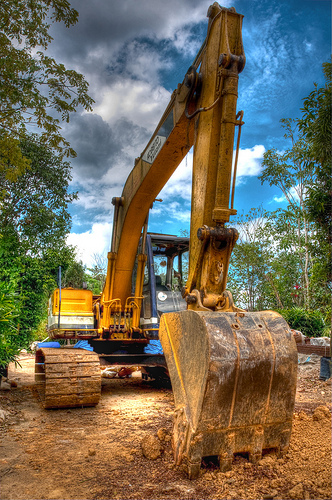Construction
Cut And Fill
A Simple Explanation
Put yourself in a project manager’s position. It’s the beginning of the project, and you need to begin excavation for footings. You have some important decisions to make:
- Will you need to keep some soil on site for backfill operations?
- Will you have room on site to store earthwork for backfill operations?
- Do your specifications allow for borrow soil to be brought in from another site?
- Does your project require large volumes of soil to be brought in for special landscaping needs?
To make an educated decision, you would want to understand how much dirt will be excavated, or cut, and how much will be put back as fill. We’ll discuss this more in Field Measurement.

It seems silly to think that a project would dig up dirt only to put it back in place, but there are so many reasons for this. Footings, or foundations almost always require excavation. But you don’t see footings or foundation in the finished product, right? Obviously backfill is required in most excavation activities, unless its mass grading of the site.
Sometimes unstable earth is not suitable to build upon, requiring removal and replacement with a more stable soil material. On one of my projects, we were digging these small 3′ x 3′ footings, and ran into beach sand that just kept caving in on the excavation. The footings ended up about 20′ long and 6′ deep just to get to solid ground. It’s important to be able to quantify this added dirt so your company doesn’t lose out on the change order. Other projects have come across toxic soil with dangerous gases likely to affect the future inhabitants of the project. This soil must be removed and replaced with clean soil.
Be smart!! It’s likely that your company either performs the work, or will be paying someone else to perform the work. Both parties should have a strong understanding of how to calculate volumes of earthwork being cut or filled. You wouldn’t measure volume of both cut and fill, because that’s like paying for the same work twice. Depending on the type of project, you would pay for cut or fill (dams usually charge for fill, roadwork is usually cut).
We’ll talk more about measurement of piles in the next section. Read on, if you dare! Daredevil Button
